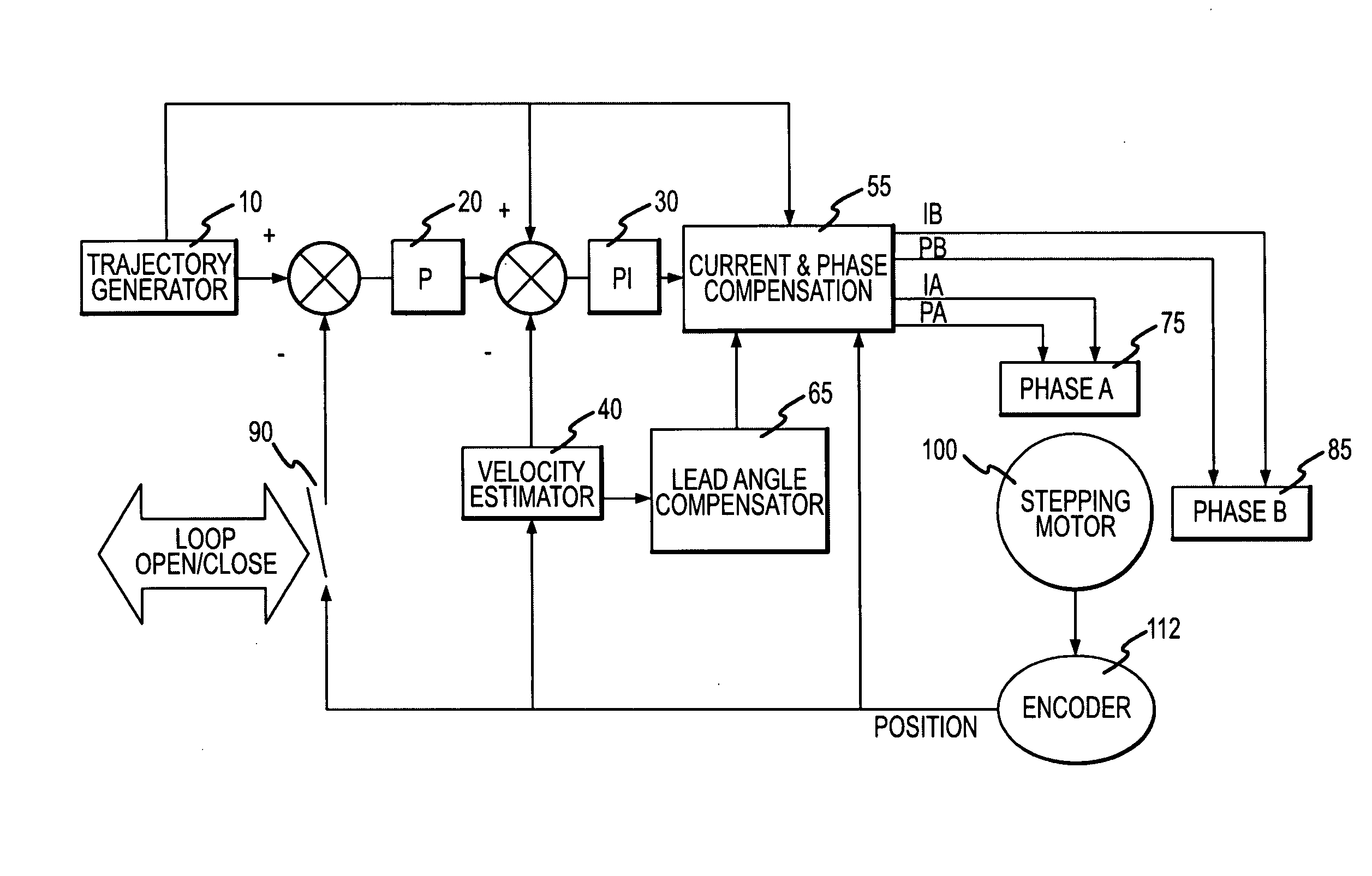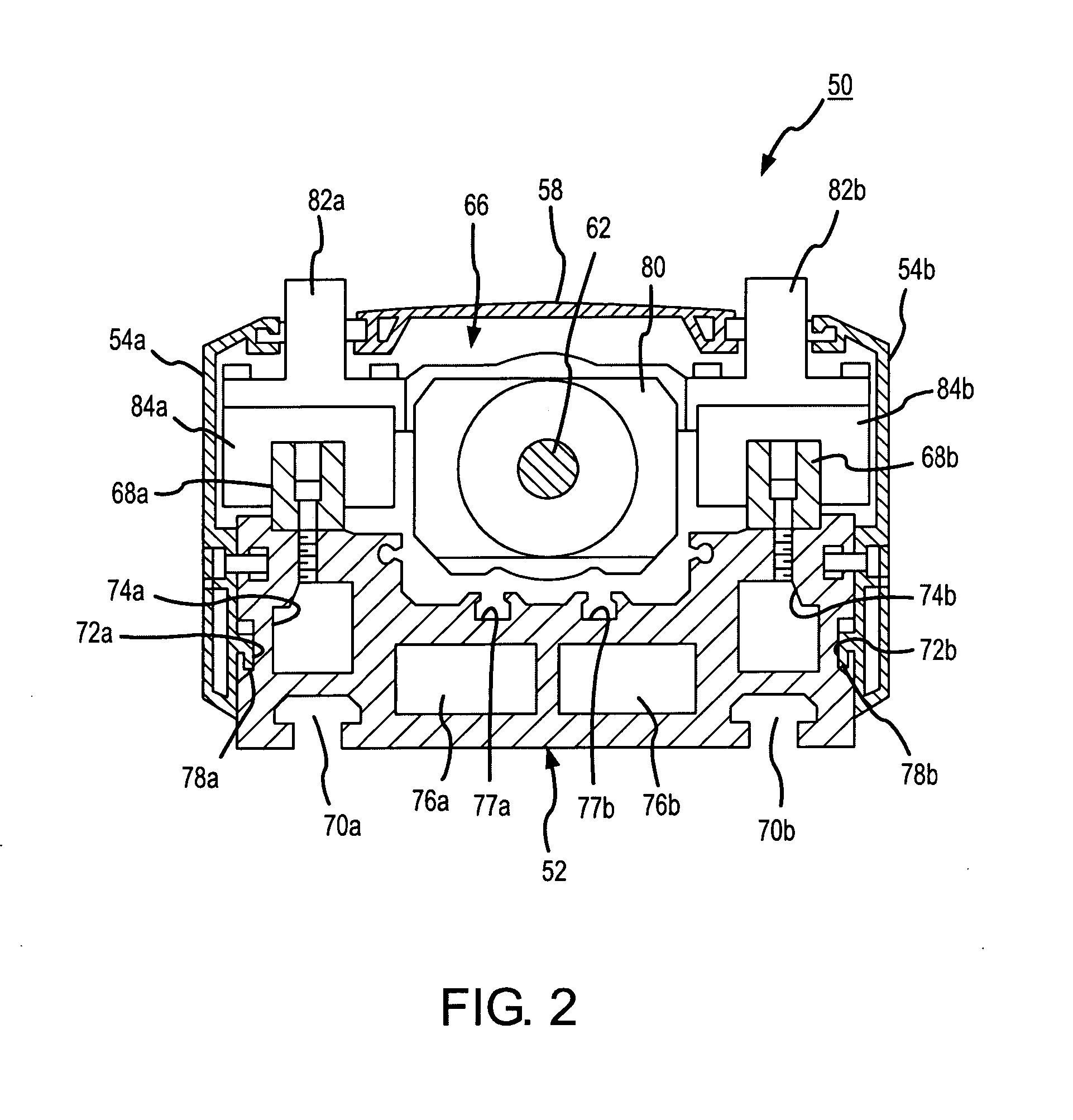Stepping motor control system and method for controlling a stepping motor using closed and open loop controls
a control system and stepping motor technology, applied in the direction of program control, dynamo-electric converter control, instruments, etc., can solve the problems of low torque performance, loss of synchronization, open-loop stepping system frequently exhibit undesirable behaviors, etc., to achieve high torque performance and improve high speed
- Summary
- Abstract
- Description
- Claims
- Application Information
AI Technical Summary
Benefits of technology
Problems solved by technology
Method used
Image
Examples
Embodiment Construction
[0031] A known type of electric linear actuator, to which the principles of the present invention are applied, is shown in FIGS. 1 through 3.
[0032] The electric actuator, generally denoted at 50 in FIGS. 1 through 3, comprises an elongate frame 52 as a base, a pair of elongate side covers 54a, 54b mounted respectively on transversely opposite sides of the frame 52, a pair of end covers 56, 57 mounted respectively on longitudinally opposite ends of the frame 52, and an elongate top cover 58 engaging upper surfaces of the side covers 54a, 54b.
[0033] On the frame 52, there are mounted a drive mechanism 60 fixed to one end of the frame 52 and supporting one end of a ball screw 62, a bearing block 64 fixed to the other end of the frame 52 and supporting the other end of the ball screw 62, and a table mechanism 66 linearly displaceable between the drive mechanism 60 and the bearing block 64 by the ball screw 62 upon rotation thereof. A pair of transversely spaced guide members 68a, 68b ...
PUM
 Login to View More
Login to View More Abstract
Description
Claims
Application Information
 Login to View More
Login to View More - R&D
- Intellectual Property
- Life Sciences
- Materials
- Tech Scout
- Unparalleled Data Quality
- Higher Quality Content
- 60% Fewer Hallucinations
Browse by: Latest US Patents, China's latest patents, Technical Efficacy Thesaurus, Application Domain, Technology Topic, Popular Technical Reports.
© 2025 PatSnap. All rights reserved.Legal|Privacy policy|Modern Slavery Act Transparency Statement|Sitemap|About US| Contact US: help@patsnap.com



